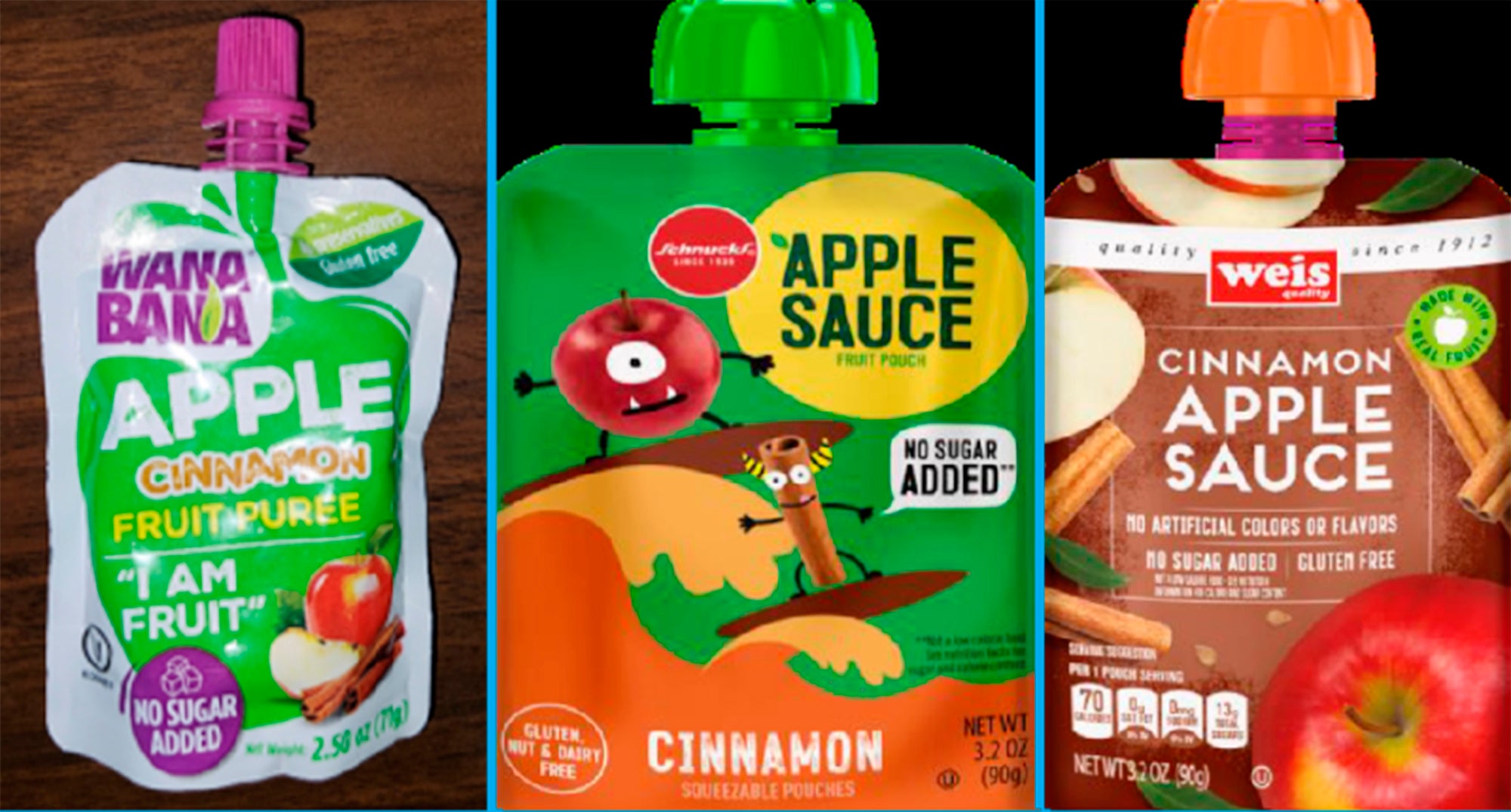FDA finds 'extremely high' lead levels in cinnamon at Ecuador plant that made tainted fruit pouches
U.S. food inspectors found “extremely high” lead levels in cinnamon at a plant in Ecuador that made applesauce pouches tainted with the metal

Your support helps us to tell the story
From reproductive rights to climate change to Big Tech, The Independent is on the ground when the story is developing. Whether it's investigating the financials of Elon Musk's pro-Trump PAC or producing our latest documentary, 'The A Word', which shines a light on the American women fighting for reproductive rights, we know how important it is to parse out the facts from the messaging.
At such a critical moment in US history, we need reporters on the ground. Your donation allows us to keep sending journalists to speak to both sides of the story.
The Independent is trusted by Americans across the entire political spectrum. And unlike many other quality news outlets, we choose not to lock Americans out of our reporting and analysis with paywalls. We believe quality journalism should be available to everyone, paid for by those who can afford it.
Your support makes all the difference.U.S. food inspectors found “extremely high” levels of lead in cinnamon at a plant in Ecuador that made applesauce pouches tainted with the metal, the Food and Drug Administration said Monday. The recalled pouches have been linked to dozens of illnesses in U.S. kids.
Cinnamon tested from the plant had lead levels more than 2,000 times higher than a maximum level proposed by the FDA, officials said.
The samples came from ground or powdered cinnamon from Negasmart, an Ecuadorian company that supplied the spice to Austrofoods, which made the pouches. The applesauce pouches were sold under three brands — WanaBana, Schnucks and Weis.
FDA said lead has not been detected in any products made without cinnamon and sold in the U.S.
The agency continues to investigate how the cinnamon was contaminated. Jim Jones, who heads the agency’s human foods program, said in an interview with Politico last week that the lead contamination appeared to be “an intentional act."
One theory is that the cinnamon may have been contaminated for economic reasons, agency officials said. That could mean someone adds or subtracts an ingredient in a food to boost its value. For example, compounds like red brick, red lead salt, lead oxide and lead chromate, which mirror cinnamon’s red color, have been added to increase the value of the spice, research shows.
At least 125 children from 22 states may have been sickened by lead poisoning since late October, the Centers for Disease Control and Prevention said. Using a different reporting method, the Food and Drug Administration counts at least 65 kids ages 6 and younger sickened in 27 states.
Tests show children who ate the pouches had blood lead readings up to eight times higher than the reference level that sparks concern, health officials said. Samples of the puree showed lead contamination more than 200 times higher than the FDA allows, officials said.
___
The Associated Press Health and Science Department receives support from the Howard Hughes Medical Institute’s Science and Educational Media Group. The AP is solely responsible for all content.